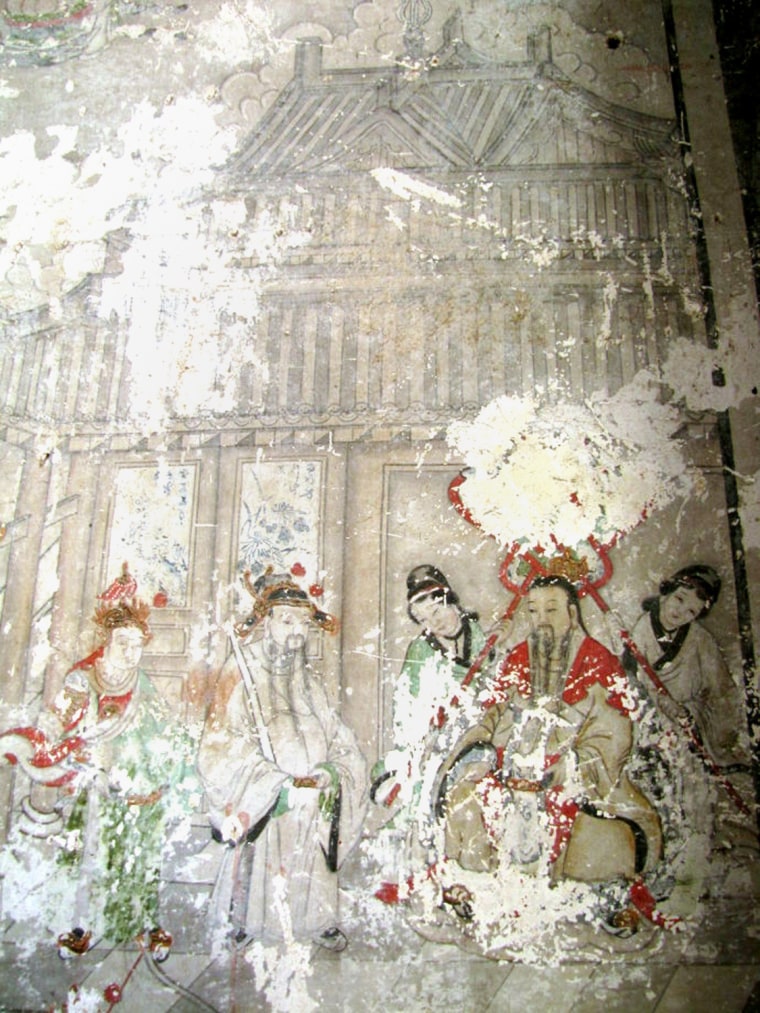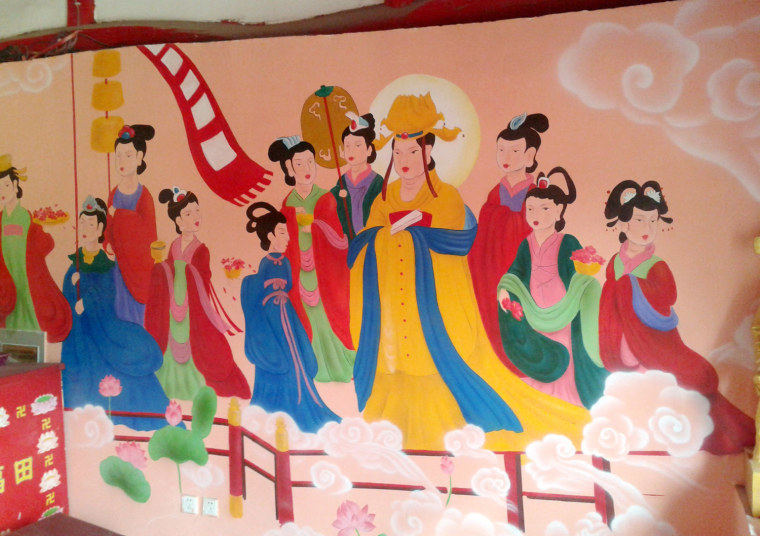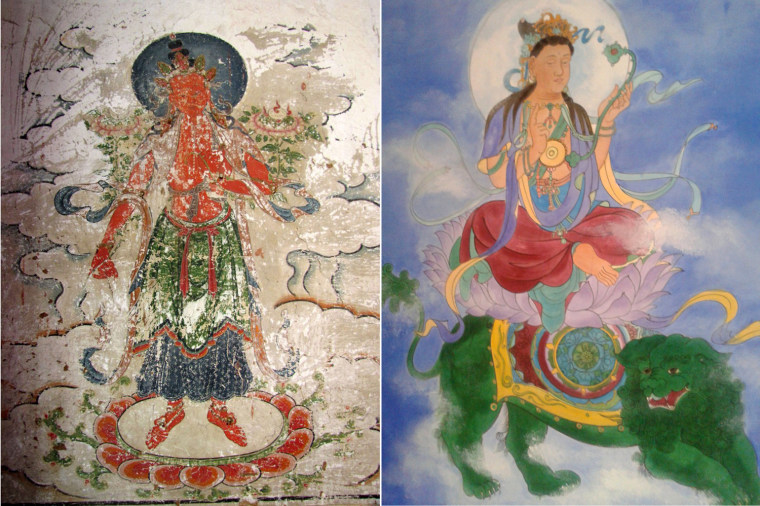BEIJING – The new frescoes in Chaoyang’s Yunjie Temple are definitely bold and colorful – too bad they don’t look a thing like the delicate historic originals they were meant to restore.
They were painted directly onto the nearly 300-year-old original ones using bright colors and bold lines, with almost no stylistic similarity to the originals.
The botched restoration job has sparked outrage among Chinese web users and led to the firing of the officials responsible for green-lighting the job.
“The last trace of the history inside [the temple] was erased,” wrote blogger “Wujiaofeng” who first exposed the restoration with a series of before and after photos.
The post by “Wujiaofeng,” whose real name is Tuo Liu, quickly made national headlines – which even surprised him.
The 23-year-old graduate student in geology told NBC News in a phone interview that he was actually amazed to see the reaction because destroying cultural relics is quite common in China.

He explained that he had originally visited the temple in 2011 and liked the ancient frescoes so much that he took some friends back to see them during the National holidays at the beginning of October, but he flabbergasted at what he saw.
“This is a crime. I am heartbroken,” wrote one blogger, responding to the photos.
Another blogger chimed in, “Cartoons drawn by my daughter are better than this.”
“Nothing is real among Chinese relics except their names,” said another.
The incident is reminiscent of the bungled restoration of a church fresco in Spain that became a viral sensation, as well as a tourist attraction.
The old frescoes were housed in the Yunjie Temple, which was built in 1734 and is considered a heritage site for Liaoning province; a pagoda inside the temple has also been designated a national heritage site. The original frescoes are believed to have been painted around the same time, the restoration started just this past May.
The manager of the temple told a local provincial newspaper, the Liaoshen Evening News, that the restoration was indeed based on original frescos and had been conducted by a professional fresco artist. The manager also told the newspaper that the temple was happy with the result of the restoration.
But since the incident was exposed, the official in charge of temple affairs and the head of the city’s cultural heritage monitoring team have been fired.

Li Haifeng, the Chaoyang government deputy secretary-general told Global Times, the state-controlled newspaper, that the restoration was not approved by the government and was carried out by a local company which was not qualified.
Xu Zhao, a professor in the fresco department of China’s Central Academy of Fine Arts told NBC that what Yunjie Temple has done is definitely “wrong."
“Restoration of frescos is a very complicate process. The principle is ‘repair as was.' It is definitely taboo to draw directly on the original paintings," said Xu.
“If it is destroyed in this way, no one can restore it,” he added.
NBC News' Chenyue Zhu contributed to this report.
Related:
